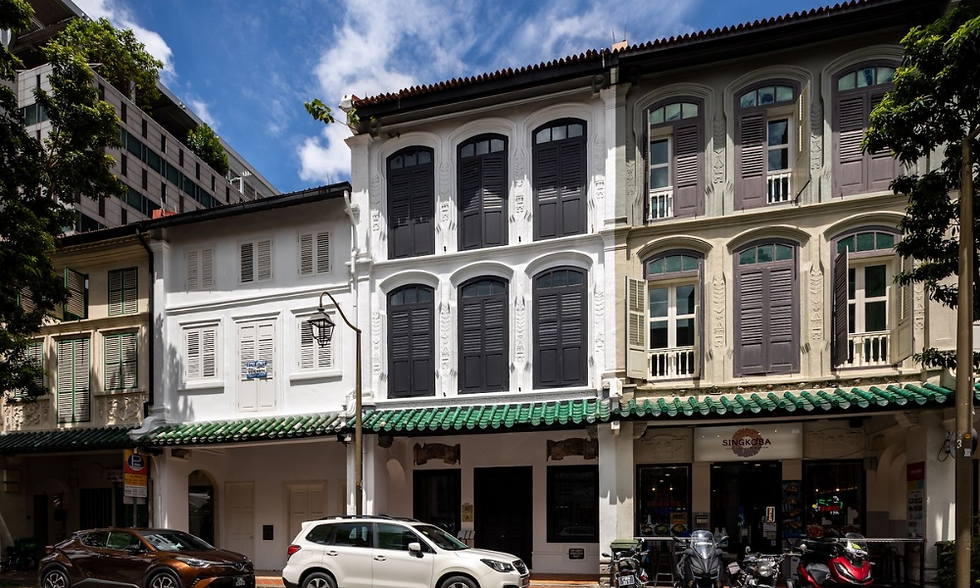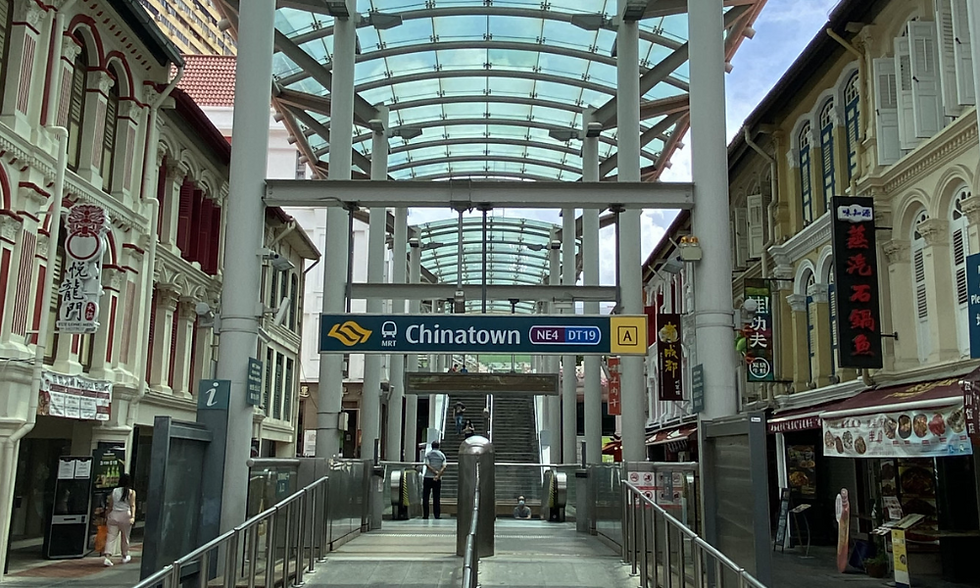Why Singapore’s Shophouses Continue to Outperform in a Competitive Real Estate Market
- Propnex Shophouse Elites
- Aug 22
- 3 min read

In a city-state known for its sleek skyscrapers, master-planned condos, and tightly regulated land supply, one property segment continues to captivate serious investors: the shophouse.
These heritage-rich, low-rise buildings, many built before World War II, offer something few other assets in Singapore can match: scarcity, charm, cultural gravitas, and serious upside potential.
And in recent years, they’ve not just held their ground in an evolving market, they’ve surged in popularity among institutional investors, family offices, boutique funds, and entrepreneurial buyers.
So what makes shophouses such a powerful asset class in Singapore’s real estate scene? And why are they outperforming expectations in a market traditionally dominated by high-rise commercial or residential investments?
The unique value of Singapore’s shophouses
Shophouses are not just buildings. They are legally conserved structures, each with deep historical roots, protected under URA’s conservation guidelines. There are over 6,500 conserved shophouses in Singapore, meaning their supply is capped, permanently.
This limited supply is at the heart of their investment appeal. As demand grows among savvy investors and global entrepreneurs seeking meaningful assets with heritage significance, values have continued to appreciate, even in uncertain markets.
Tradition outside, transformation inside
One of the most fascinating trends in the past decade has been the adaptive reuse of conserved shophouses.

While the façades and key architectural elements are legally protected, interior renovations have enabled creative reimaginings of what these buildings can be. Today, Singapore’s shophouses are home to:
Boutique hotels with heritage branding and high occupancy rates.
Co-working spaces that attract creative agencies and startups.
Michelin-rated restaurants and artisanal cafés.
Luxury retail boutiques blending historic charm with high-end positioning.
Wellness studios and private member clubs targeting the elite demographic.
This ability to merge old-world aesthetics with modern-day function is what gives shophouses their unique commercial appeal. The balance between character and commercial use makes them perfect for businesses that rely on experience-driven environments and brand storytelling.
High rental yields and capital appreciation
Ask any serious investor what they’re looking for in a property asset, and you’ll usually get two answers: yield and capital growth. Shophouses, when chosen wisely, can offer both.
Properties located in high-traffic commercial zones like Telok Ayer, Amoy Street, or Boat Quay consistently command strong rental demand. F&B operators, creative agencies, and high-end service brands are willing to pay premium rates to occupy these spaces, especially in vibrant enclaves where brand visibility is key.
On the capital growth side, shophouses in conservation zones like Emerald Hill, Chinatown, and Little India have seen significant appreciation in the past decade. Their historic significance, combined with zoning protection and finite availability, makes them resilient during downturns and competitive in upswings.
Where are the hotspots?
Some streets and districts consistently outperform other spots due to location, walkability, MRT access, and cultural draw.
Here are a few key districts where shophouse investments are seeing strong momentum:
Chinatown

Arguably the crown jewel of Singapore’s shophouse scene. With its constant tourist flow, established F&B scene, and excellent transport links, Chinatown offers both short-term rental yields and long-term capital growth. The conservation character is especially strong here, making it highly desirable.
Kampong Glam
Home to a diverse mix of Muslim, Malay, and Arab heritage, this area has seen a creative resurgence. Boutique retail and lifestyle F&B concepts thrive here, making it one of the more colorful and walkable districts. Investors are eyeing it not just for tourism traffic but also for lifestyle branding.
Joo Chiat & Katong
On the East Coast, these residential-turned-creative districts have seen growing demand from locals and expats alike. Boutique cafés, pet stores, yoga studios, and beauty businesses have transformed the area into a lifestyle magnet. Plus, proximity to the upcoming Thomson-East Coast Line adds infrastructure upside.
Telok Ayer & Amoy Street
Part of the CBD, these areas are known for their sleek blend of shophouse character with modern office usage. High rents, strong weekday foot traffic, and a white-collar target audience make this zone prime for investor attention.
Singapore’s shophouses are proving the value of something older, rarer, and deeply rooted. These are not speculative assets. They are long-game investments, which are ideal for those who value stability, prestige, and appreciation built on urban fundamentals.
Whether you're seeking to reposition one as a flagship boutique, lease it out for solid yield, or simply preserve a piece of Singapore’s architectural legacy, the conserved shophouse remains a real asset in every sense of the word.
Ready to explore this rare segment of the market?
Speak with the PropNex Shophouse Elites (PSE) team, Singapore’s trusted experts in high-value shophouse investments across every major district. We’ll help you spot the opportunities others miss.





Comments